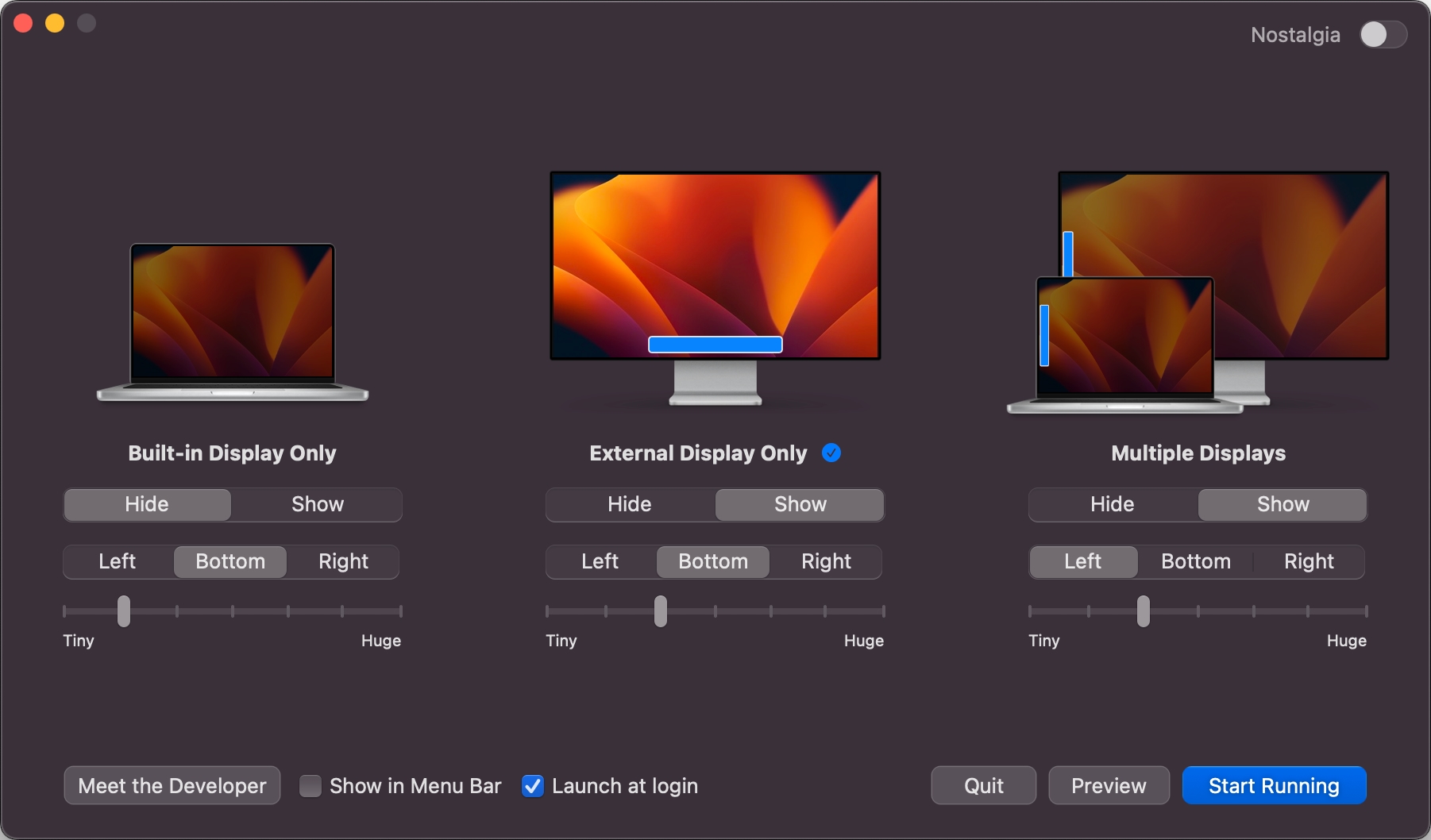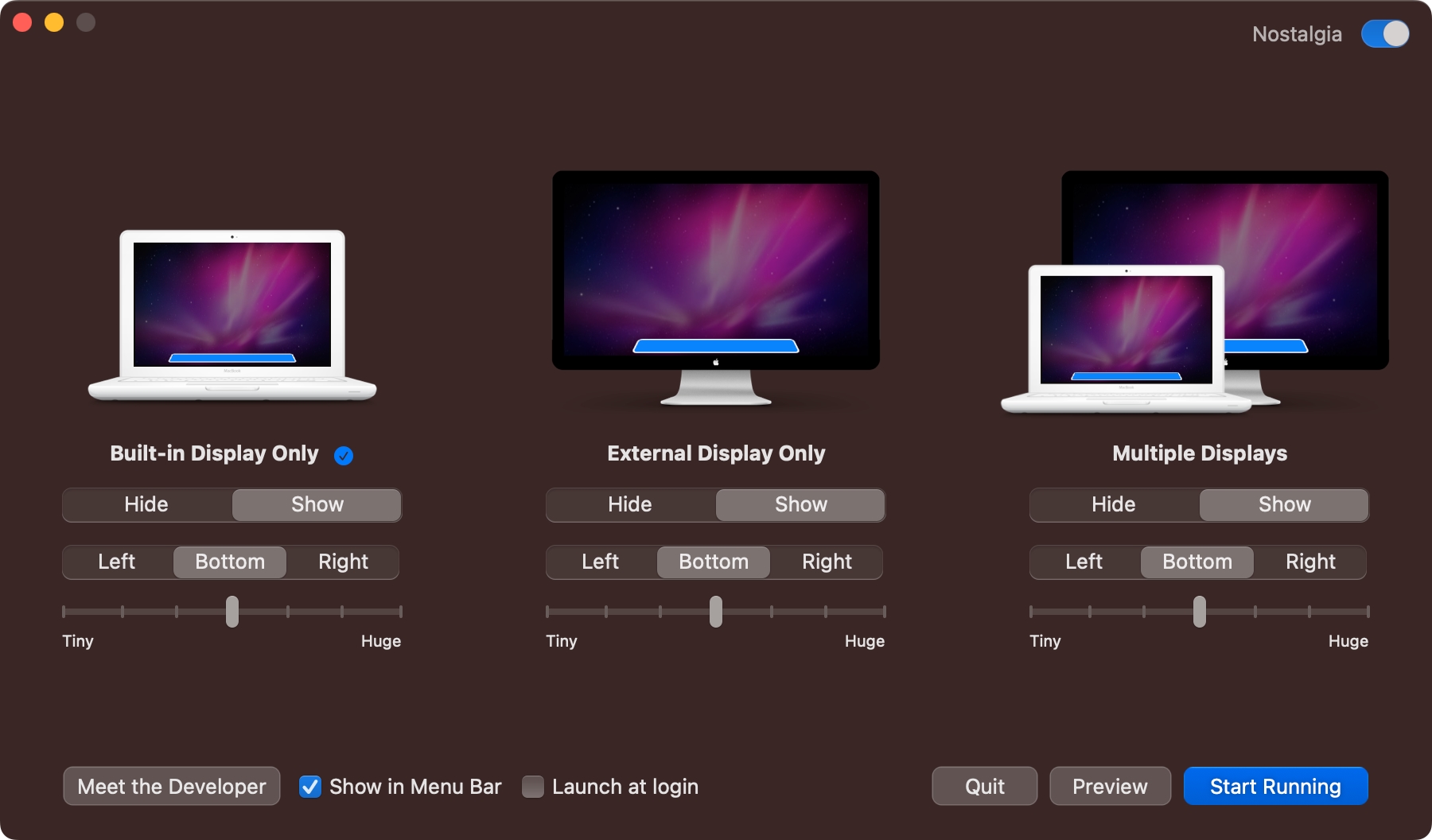Instead of manually changing the macOS Dock layout settings every time your Mac’s display setup changes, why not let HiDock automate this boring task?

Typically, I set the Dock in macOS hidden while working on my 15-inch MacBook Pro to maximize the usable screen space for apps and my content.
But every time I reconnect my external display or my screen setup changes, I have to manually change the settings to show the Dock on the big screen. Measuring 27 inches diagonally, my external display has plenty of screen space to render the Dock in full width with gorgeous big app icons—without my productivity suffering.
Say hello to HiDock
Wouldn’t it be nice if there was a way to automatically change the Dock settings on a per-display basis? That’s where a free new macOS app, called HiDock, jumps in.
Created by Rafael Conde, HiDcok enables you to create different Dock settings that automatically kick in depending on which display setup is active at any given moment. Trust me, anyone with a multi-monitor setup needs this helpful software.
Per-display Dock settings

The initial setup couldn’t be more straightforward. With a few clicks, you can adjust Dock settings separately for the built-in MacBook display, an external display or a multi-screen setup spanning your MacBook and external display screens.
For each of the three display configurations, you can choose whether the Dock is visible or hidden, where it’s located (at the bottom of the screen or the left/right side) and how big you want it to be. With everything configured to your liking, HiDock will automatically apply your Dock customizations when you connect to an external display or use your MacBook in a multi-display configuration.
To be perfectly clear: These customizations don’t differ from the Dock layout options that are available in System Settings → Desktop & Dock. However, having HiDock automate changing them accordingly will save you a lot of time.
With HiDock running in the background, an appropriate Dock layout will be auto-deployed as you roam between your screen. HiDock will remain accessible through the macOS menu bar. From there, you can force-apply Dock settings, bring up the settings interface or quit the app. Read: How to customize the Dock on iPad
The Nostalgia button

The developer even added a bit of nostalgia to HiDock—if you click the little Nostalgia switch in the top-right corner of the window, images of Macs in the app will change to old models.
How to download HiDock
HiDock is available for download via the official website at hidock.app. All the features are available at no charge. If you’d like to support Rafael’s work, consider sending him a donation via the website. HiDock requires macOS Monterey or later.
Be sure to check out Hand Mirror, Rafael’s excellent menu bar camera app, at handmirror.app. It gives you one-click access to your Mac’s camera for those times when you’d like to quickly check your appearances before joining a video call.